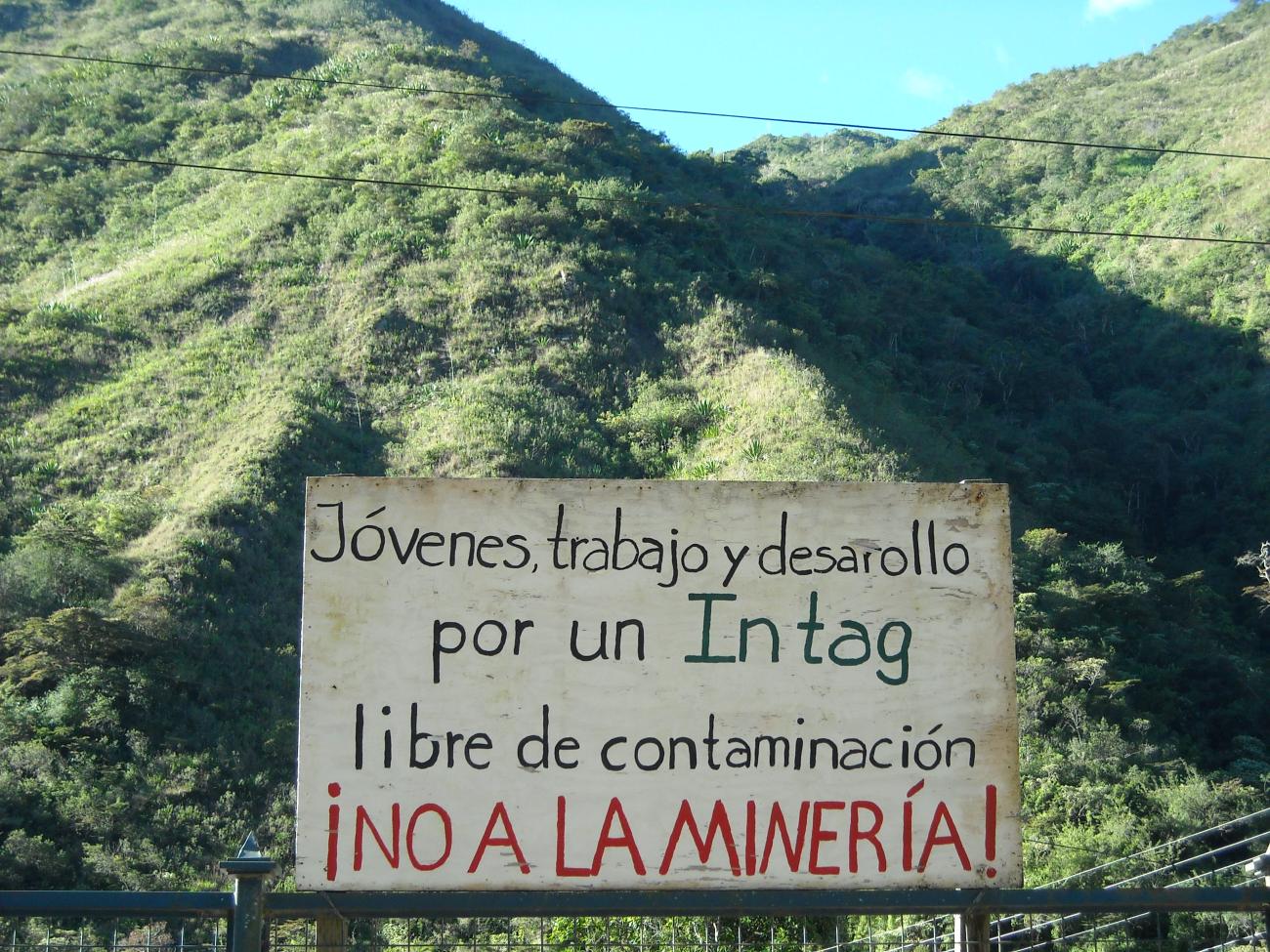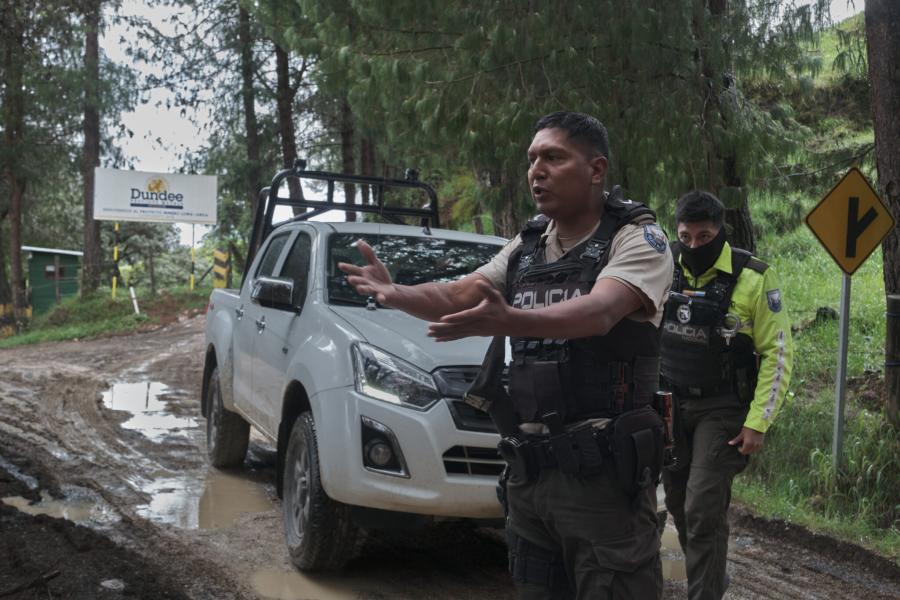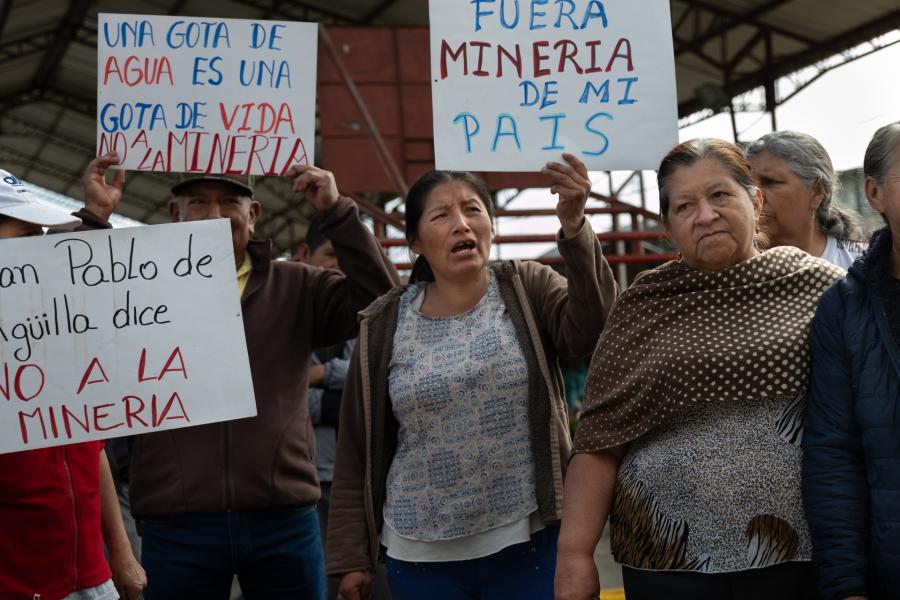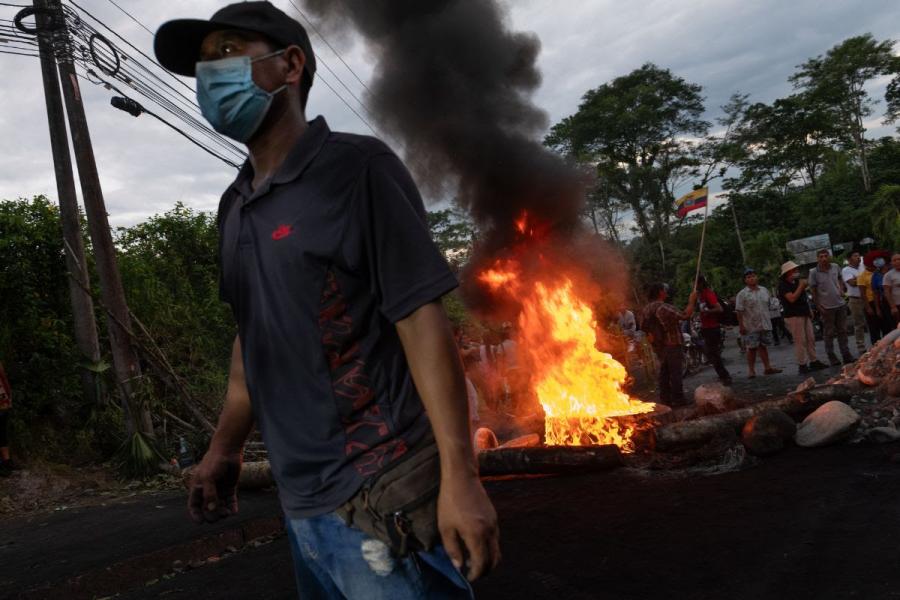
Ecuadorian courts, since the pioneering codification of the Rights of Nature into the Constitution in 2008, have reviewed and ruled on several lawsuits filed by Indigenous and campesino communities in efforts to protect their lands and biodiversity from extractivism. When the Rights of Nature articles were first introduced, they were viewed as an important tool for correcting decades-long environmental degradation, in part, by being defined together with community rights. Since then, Indigenous communities and campesinos have had a legal opportunity to bring their resistance movements against extractive companies to the judiciary scene.
The most historic Indigenous legal victories concerning the Rights of Nature involve the 2018 A’i Kofán of Sinangoe and 2019 Waorani cases, both setting significant legal precedence for Indigenous rights and territories in Ecuador and abroad. After the Constitutional Court reviewed both cases in 2022, it ruled that the State of Ecuador is obliged to guarantee that Indigenous communities are consulted about extractive projects on or near their territories and must give their consent prior to the planning of extractive projects. With such a ruling, Ecuador’s highest court underlined the Right to Free, Prior and Informed Consent (FPIC) as per UN Declaration on the Rights of Indigenous Peoples, expanding what was previously flawed consultation processes to involve consent from Indigenous communities.
On March 29, 2023, campesino communities of the Intag Valley won a juridical victory against mining companies Codelco and ENAM. The Imbabura Provincial Court ruled in favor of the Rights of Nature relating to the Llurimagua Copper Mining Project, revoking the companies’ mining licenses for the project, preserving the natural integrity of the Tropical Andes, and reinforcing local communities’ constitutional right to consultation. This victory further signifies that Ecuadorian courts are prepared to uphold the rights of Indigenous Peoples and rural communities despite the increased demand for transition minerals, including copper, in transitions to a “green economy.”
Hugo Ramirez, activist and a resident of the community of Chalabuayaco Alto, in the Intag Valley, laid out the high stakes of this lawsuit, describing the detrimental impact the mining project would have had on the Valley communities if the concessions had not been revoked. “As it is a mine located in the higher parts of our communities, there would be a total change of the current environment. As there is a lot of water coming out from the highest parts, the primary forests, all our mountains would have to be demolished if the mine were to be built. At the same time, our rivers would be polluted, causing a total change in the environment,” Ramirez says. The Intag region is considered a hotspot for biodiversity as one of the most biodiverse regions on our planet.
The environmental impact study conducted as part of the planning process necessitated the relocation of four communities, more or less about 100 families, which is a significant social consequence to the Valley communities. During the 2023 UN Permanent Forum on Indigenous Issues, Galina Agarova (Buryat) Cultural Survival’s Executive Director, outlined the interconnected social and environmental consequences of mining projects for Indigenous and rural communities, even for those projects that are launched in connection with the transition to the “green economy.” “We know this as activists: A mining project does not come alone, It does not arrive at the lands of Indigenous Peoples alone. It comes with associated infrastructure. It comes with roads, it comes with processing facilities, it comes with ports to ship the minerals to other parts of the world...it does not really come alone. It affects many people and biodiversity on the way to the consumer. So the consumer must know what is happening on the lands of Indigenous Peoples,” Angarova said during a livestream panel on Securing the Rights of Indigenous People in the Transition to a Green Economy at the 22nd session of the UN Permanent Forum on Indigenous Issues.
Ramirez has played a significant role in the 30-year-long resistance movement to protect the Intag Valley against numerous mining companies, a fight that has occasionally turned violent as mining companies have used paramilitaries and force to crack down on community resistance. Ramirez’ brother, activist Javier Ramirez, was illegally jailed for resisting and Ramirez himself had to go underground for five years to avoid arrest. The decade-long fight against several mining companies and the threat of environmental destruction, violence, and forceful arrests, has negatively impacted the unity of the Intag Valley communities. “We have lived here together for years, we were born here, so we have had a friendship with all the people as if we were all families.” Ramirez elaborates, describing the rift that has grown between community members: “There has been a division of [our families] with some supporting the mining project for economic convenience and those who have come to buy the morals of our communities.”
For Ramirez, the consequences of this disunity still weigh heavily on the communities, despite the recent monumental victory and revocation of the concessions for the Llurimagua site. “We no longer have the same trust that we had before...and we saw that there are youth who have been convinced to support the projects,” Ramirez says. In spite of this, “many young people are against the mining project because they realize that the youth are the ones who will be most affected. [They] will suffer the direct contamination of the mining pollution...Our youth, our children, they will be the ones that will be most affected in our communities,” says Ramirez.
Although this judgment set a legal precedent for the constitutional right of consultation, expanding the case law on the rights of nature in relation to extractive and developmental projects, which may impact future lawsuits launched by Indigenous communities positively, the fight to protect the Intag Valley has not yet ended. In fact, this is the sixth time a mining company has been forced to abandon its plans and leave the Intag area. For Ramirez, Intag defenders must continue to “be firm in the struggle, thinking about the future for our children and taking care of nature, which is the main thing in our mountains; to have continuous clean water and pure air in our communities. I believe that when it is time for us to leave the struggle, we must encourage our children to continue defending the forests, the water, the land, because that is the source of life.” This victory in conjunction with the previously mentioned victories is a monumental step towards securing the rights of Indigenous and rural communities and Nature.
Photo: Dawn Paley



